Religion, the Church and Freemasonry are not constantly at odds. Pope Pius IX [1], for example, was a Freemason born Giovanni Maria Mastai Ferretti in the profane world. He was elevated to Pontiff on 16 June 1846 and had hardly been in that post three months when, to the huge regret of his masonic Brethren, he issued an encyclical against the Order. So much for Brotherly love!
Half a century later Angelo Roncalli and Giovanni Montini, better known respectively as Pope John XXIII (or the Good Pope) and Pope Paul VI, were also raised into the Great Mysteries of Freemasonry.
Both prelates saw themselves as enlightened heads of State and launched significant reforms of the Church, aimed at bringing it up with times. The changes introduced by the Second Vatican Ecumenical Council are even based on the Masonic principles and postulates. The Council addressed the relationship between the Catholic Church and the contemporary world. The Council was formally opened under the pontificate of John XXIII on 11 October 1962 and was closed by Paul VI on 8 December 1965. The reforms, however, were regarded by many as heresies.
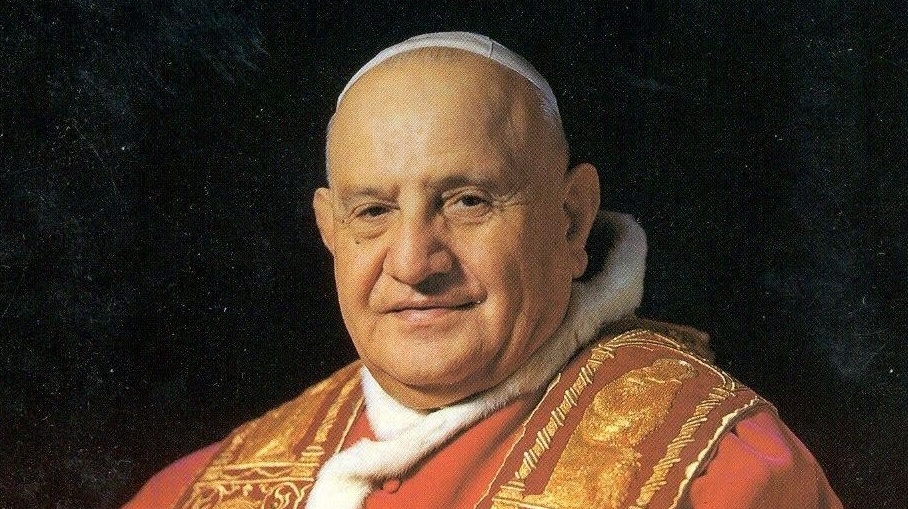
John XXIII – A. Roncalli 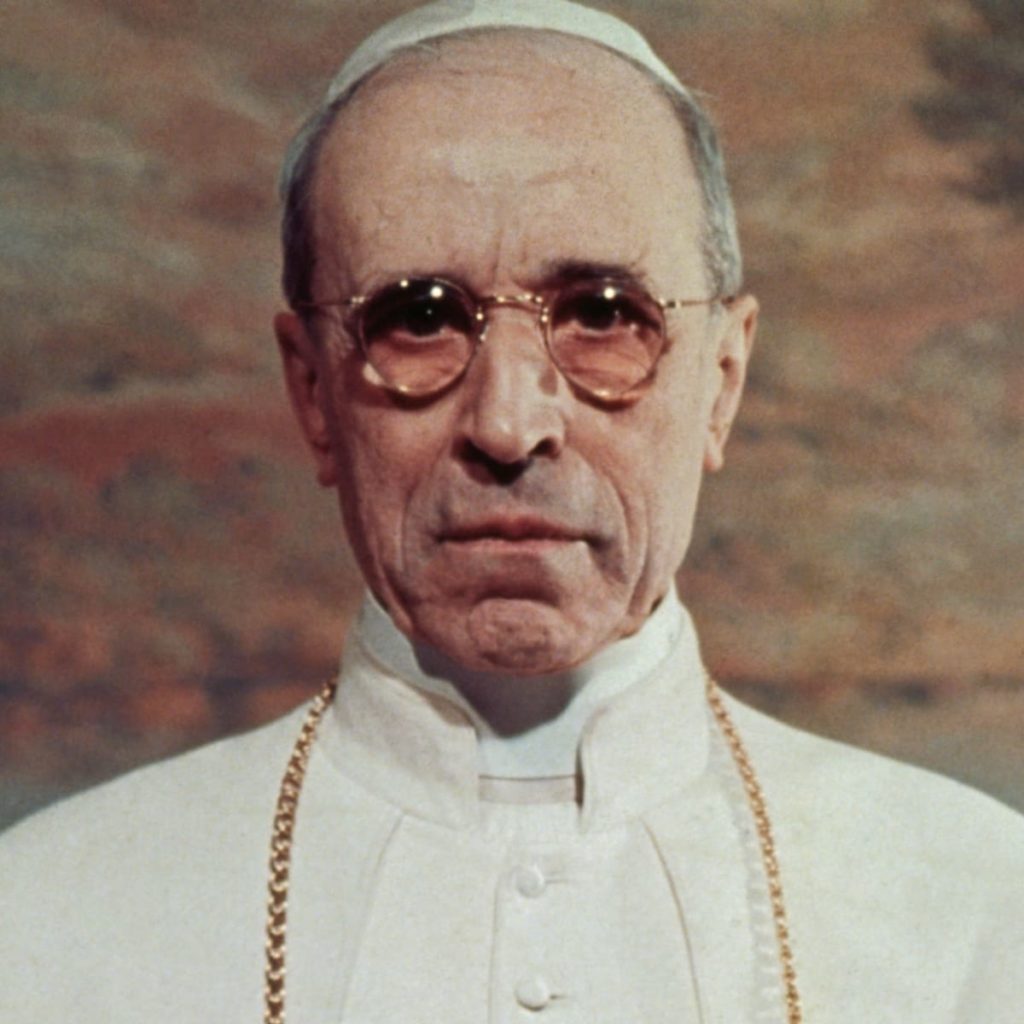
Pius XII – G.Pacelli 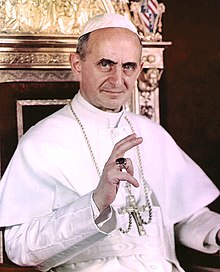
Paul VI – G. Montini
We do not know why Giovanni Pacelli/Pope Pius XII always denied the Cardinalate to Giovanni Montini. But on 24 November, 1958 Angelo Roncalli, twenty days after being installed on the throne of Peter as Pope John XXIII, wasted no time and made his brother of the Order a Cardinal at last, alongside twenty-three other prelates.
POPE JOHN XXIII & HIS PROPHESY [2]
From 1935 to 1944, Angelo Roncalli was the Archbishop of Mesembris and the Apostolic delegate in Turkey, and like other religious ministers during the years of WWII, wore civilian clothes. Unchained from wearing a robe that would pick him out of a crowd as being married to the Church of Rome, Roncalli found an introduction into esoteric circles easier to come by. He was ultimately initiated in Turkey in the Rosicrucian teachings of the Order of the Martinists.[3] The principles of the tradition were formed by Martinez Pasquales (1724–1774) who was a Master Mason, a practising Catholic and a student of the Kabbalah and the Jewish law.[4]
It was Pier Carpi, a researcher and a strong critic of all kinds of initiatory or secret societies, who paradoxically found the documents evincing the initiation of Angelo Roncalli. Pier Carpi also extensively describes the initiation Rite in his work “The prophecies of Pope John”. The book was printed in 1976, thirteen years after the Pope’s death, and rapidly sold out. Carpi also informs us that during one Lodge meeting Roncalli fell into a long-lasting mystical trance during which he dictated his famous prophecies.
The documents that Carpi claimed to have come in possession cover a historical period that runs from the time Angelo Roncalli was a Nunzio Apostolico [5] in 1934 to the year 2033.
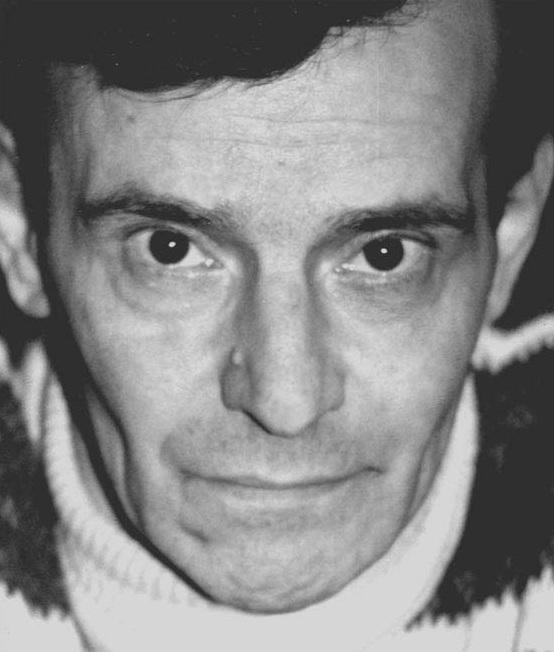
In a passage from those prophecies we read: “Benedict, Benedict, Benedict, you will go barefoot and will walk with the holy, barefoot”. This is a fair allusion to Pope Benedict XVI (Joseph Ratzinger) defined as “barefoot” because – like Saint Francis of Assisi who stripped of all his possessions – he renounced his public role as Pontiff. But it is too an allusion to Benedict’s successor , Jorge Mario Bergoglio, who for his mandate took the name Francis in 2014.
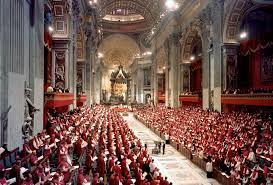
The allusion to both Popes in Roncalli’s revelations is supported in another passage of the prophecy , where they are described “as two brothers”. In this regard, we would like to recall the words with which the present Pope Francis addressed the Pope Emeritus Joseph Ratzinger when he first met him: “We will walk together, like two brothers”. The words in Pope John XXIII’s prophecy are identical both for the choice of the verb “will walk …” and for the definition of “brothers”.
It is being pointed in some quarters, however, that Joseph Ratzinger did not resign as Pope but merely as the Bishop of Rome. In the past the Pope has occupied the two roles conjointly, but it is not inconceivable, in practical terms, to separate them. In a statement, Benedict cited his deteriorating health due to old age–he was eighty-six years old – and the physical and mental demands that came with the job, as the reasons for resigning. He also claimed that he would continue to serve the Church “through a life devoted to prayer”.
For many Christian faithful around the world, however, Pope Benedict XVI remains the genuine and only Pope.
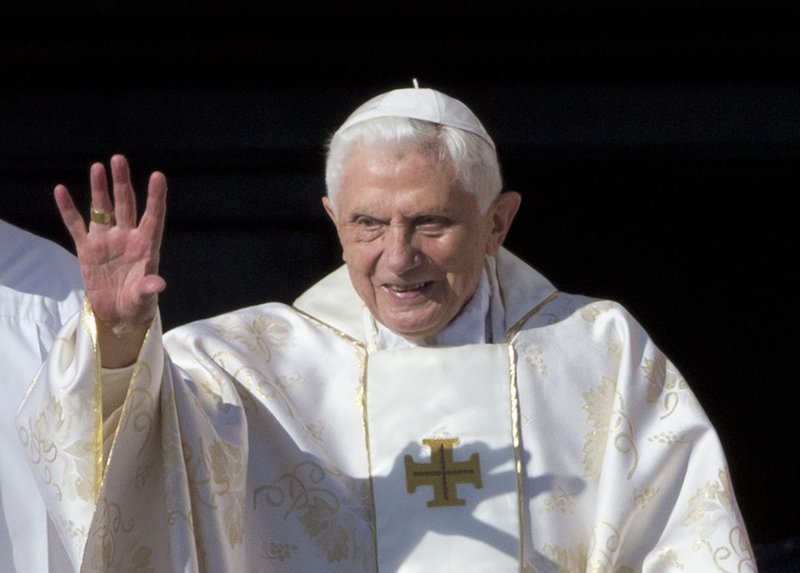
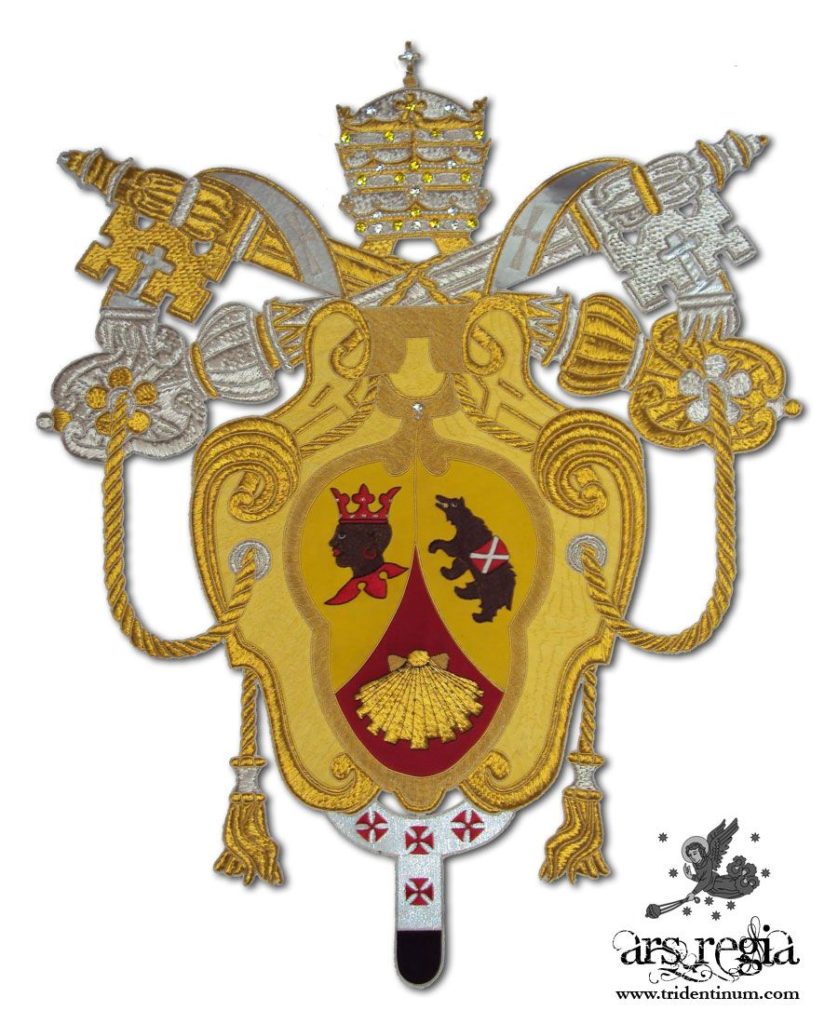
Pope’s Benedict XVI’s coat-of-arms
In Pope John XXIII’s prophecy, there are also these frightening line: “… and nobody will be a true Father (i.e. Pope). The Mother (i.e. the Church) will be a widow. Your kingdom will be great and short, but it will take you (referring to the Pope) far, to the distant land where you were born and where you will be buried“.
All Popes are entombed in the Vatican, so why did John XXIII foresee a return to Argentina of Pope Francis and his interment there? Will Bergoglio be deposed? That would surely make the Church of Rome (‘Mother’) a widow.
Pope Bergoglio’s comments on his election were: “It seems that my cardinal brothers went to take him [meaning the new Pope and thus referring to himself] almost at the end of the world”, and in March 2016 he admitted: “I have the feeling that my pontificate will be short. Four or five years, I don’t know (…)”.
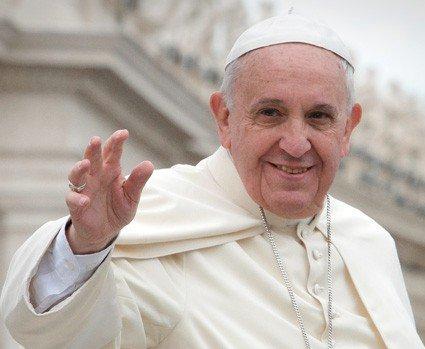
The third Secret of Fatima remained concealed to the world since its revelation to the Portuguese shepherd children by an apparition of the Virgin Mary in 1917. In an effort to put an end to fevered speculations, in May 2000 Cardinal Angelo Sodano (Secretary of State of the Vatican) stated that the secret was not about a possible World War III or the disintegration of the Catholic Church following an internal feud. It was the attempted assassination of Pope John Paul II in 1981.
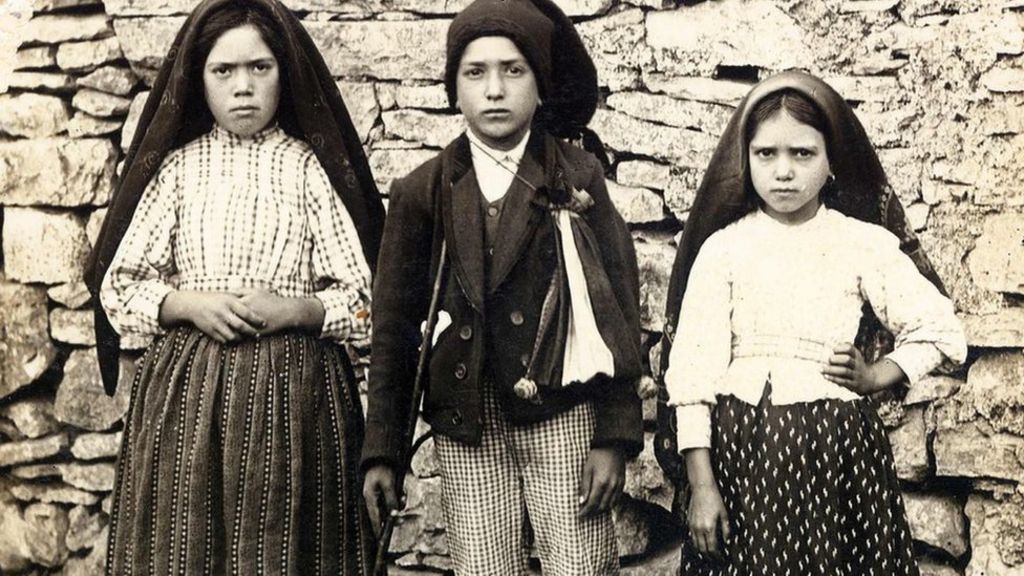
Pope John Paul II ,however, never referred to that major event – there were two more attacks on his life in the following years – as the Fatima’s Secret; perhaps the murder attempt was only one small part of the secret. The shepherd children who allegedly received the message from the Virgin Mary mentioned there would be the murder of a bishop “clothed in white” which is the dress colour only of the Pope. There is then the prophecy of Saint Malachy [6] that refers to a Black Pope being the last Pontiff to sit on the throne of Peter. Black is the colour of the frock worn by the Jesuits, and Bergoglio is from that Order [7]. But black is also the colour of the “crowned” character shown on the coat of “arms” of Pope Benedict XVI… So either Francis or Benedict XVI may be the last Pope that the Catholic Church will have. For Malachy the death of such Black Pope would sanction the apocalypse !
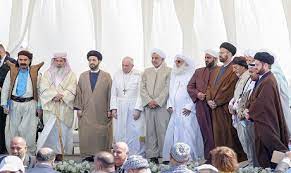
An editorial by the Irish Independent journal of 2.10.1998 posted online states that according to Malachy’s prophecies time frame, the Pope – which at the time of the article was John Paul II–would have been replaced sometime around the year 2000 (he actually died of old age in 2005) and his successor (Benedict XVI) would spend just eight years in the Vatican. This latter prediction was spot on, because Benedict XVI was elected in 2008 and resigned in 2013! Then comes the final and current Pope– Francis – and the `last persecution’ of the Christian Church in the second decade of his tenure, thus from 2023 on. Fortunately, the prophecy of Pope John XXIII states that the Holy Mary would run to our aid and “the Mother of the Church will be the mother of the world”. Does this mean we should get ready to welcome a Global Church ?
Interestingly, Bergoglio has conducted several international pastoral visits since he was appointed and has been in Countries of disparate religious observances like: Israel (Jewish), Central America and Africa (Catholic), South Korea and Sri Lanka (Buddhist/Christian), and even the Muslim Nations of Bosnia, Morocco, Egypt and Iraq on 5th March 2021, right in the heart of the second COVID-19 wave! Do the missions , behind the official explanation , represent an attempt to reach a shared understanding among the world religious leaders and bury any conflicts ? Only time will tell.
THE LEFEBVRE CASE
How many of you remember the famous disagreement between the Church and the French Roman Catholic archbishop Marcel François Marie Joseph Lefebvre?
In 1970, Monsignor Lefebvre founded the Society of Saint Pius X (SSPX) as a small community of seminarians in the village of Econe, Switzerland. In 1975, after a flare up of tensions with the Holy See, Lefebvre was urged to dissolve the Society, but he rejected the request and launched accusations of organised relations between the Church and Freemasonry. In a letter to the Pope, Lefebvre noted that the Church modernization that the Vatican Ecumenical Council intended to introduce was a “compromise with the ideas of modern man” and it stemmed from a secret agreement between high dignitaries of the Church and senior Freemasons.

Lefebvre even condemned the 1789 French Revolution and what he called its “Masonic and anti-Catholic principles”.
In 1988, against the express prohibition of Pope John Paul II, Lefebvre consecrated four bishops to continue his work with the Society of Saint Pius X (SSPX). The Holy See immediately declared that under Catholic Canon Law they had incurred into an automatic excommunication, a status that Monsignor Lefebvre refused to acknowledge right up to his death three years later.
THE VATICAN FREEMASONS
On 12 September 1976, the Italian magazine L’Osservatore Politico or OP, printed a list of suspected Freemasons in which emerged the names of prominent high prelates.
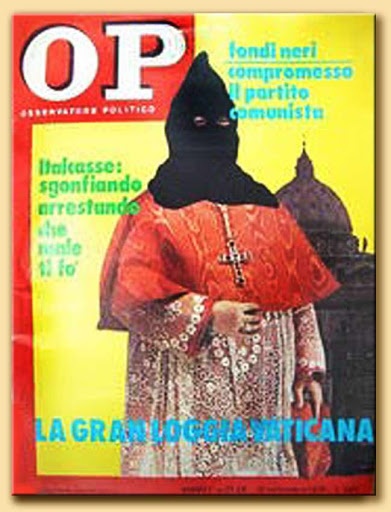
Among them were :
- The Archbishop of Turin Michele Pellegrino;
- The Vatican Secretary of State Jean-Marie Villot;
- The Vicar General of Rome Ugo Poletti, who reported directly to the Pope;
- and even Pope Paul’s VI’s Private Secretary, Pasquale Macchi, a Freemason since April 23, 1958.
The editor of OP was the journalist Carmine Pecorelli, a Freemason himself and a member of the infamous Lodge P2 of Licio Gelli. On the eve of the Conclave in August 1976, the news agency EuroItalia disclosed over one hundred names of prelates who were also Freemasons. Some of them were even candidates for Papacy, like the Vatican State Secretary Cardinal Jean Villot and the Prefect of the Papal Household Monsignor Dino Manuzzi.
A group of alarmed Cardinals asked the Pope to investigate those allegations. Paul VI assigned the matter to Monsignor (later a Cardinal) Benelli, and the prelate passed it on to the General of “Corpo d’Armata” – the highest military position in the land – Enrico Mino. The officer was able to validate the document and substantiate the allegations , but the Vatican took no disciplinary steps towards the accused individuals. In fact, a year on, those prelates were still holding positions of power within the Vatican. Disturbed by the situation, the Cardinal of Genova – Giuseppe Siri – petitioned the General to reopen the inquiry. But Enrico Mino found his death when the military helicopter he was on crashed in Calabria in October 1977 and in highly suspicious circumstances. The residents claimed to have witnessed the vehicle explode mid-air….
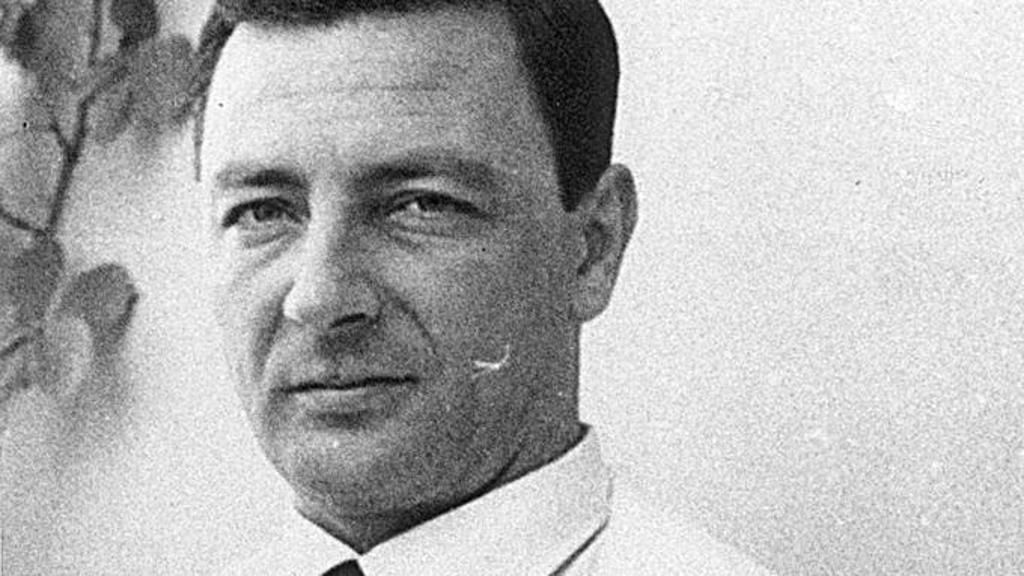
Soon after the appointment of Albino Luciani/Pope John Paul I, the journalist Carmine Pecorelli, in an article published in L’Osservatore Politico, appealed to him to investigate the I.O.R. (the Vatican Bank) for irregularities and either carry out a silent purge of the prelates who were alleged of being Freemasons or openly reject of the accusations.
But Pal John I had no time to do either things. On 28 September 1978, thirty-three days after sitting on the throne of Peter, he was found dead in bed. His was the shortest papacy in history and to these days people still strongly suspect that he was poisoned.
As for the journalist and Freemason Carmine Pecorelli, he was shot in his car parked outside his office in Rome, on 20 March 1979. The assassin or assassins were never caught but the police suspected the execution was carried out by the far-left armed organisation The Red Brigades. Pecorelli had also close links with the Italian secret service and was investigating the kidnap and murder of the political leader Aldo Moro.

THE CHURCH AND THE ESOTERIC SOCIETIES
- Nostradamus (an occultist and astrologer)
- Cornelio Agrippa (an occultist and esotericist)
- Saint Alberto Magno (an astrologer)
- Saint Tomas de Aquino (a white magician and pupil of Alberto Magno)
- Leonardo da Vinci (an esotericist, occultist and inventor besides being a talented artist)
All the above individuals from the past and many more throughout the centuries, were not only great scholars of the esoteric tradition but also practising Catholics:
History records even Popes who had a close relationship with esoteric , magic societies and eminently occult traditions. There is quite a list , but for reasons of brevity I will just quote two of those prominent sorcerer Popes.
Pope Honorius III (1150 – 1227), was the head of the Church from 18 July 1216 to 18 March 1227 and the author of The Grimoire [8], a book of magic spells and invocations claiming to be specifically designed to be used by priests. Some of the instructions in it even include saying a Mass. The book combines Christian and cabalistic elements and deals, especially with rites of Exorcism. This is how Alphonse Louis Constant described the tone of the book:
. . . the mystery of darksome evocations is expounded therein with a terrific knowledge concealed under superstitious and sacrilegious forms. Fastings, watchings, profanation of mysteries, allegorical ceremonies and bloody sacrifices are combined with artful malice.
Pope Leo III (750 – 816) reigned from 795 to his death and is the author of The Enchiridion , an infamous book of Black Magic. The charms contained therein are cast in the form of prayers, and are concerned with worldly advantages far more than with those of a spiritual kind. Quite unlike the devotional spirit of the Church ! According to a legend attached to the Enchiridion , Leo III gifted it to Charlemagne before he left the eternal city, following his coronation to Emperor of the Roman Empire.
Alphonse Louis Constant, better known among scholars of esotericism as Eliphas Levi, said that there is a vast quantity of material on magic, occultism and Freemasonry in non-Masonic libraries than we may imagine. The Vatican Archives certainly do! Levi was ordained after studying at the Seminary of Saint Sulpice in Paris and thus he had access to both the Convent and the Seminar’s books collection. His very broad culture and fluency in several languages made it easier for him to consult old and rare documents that allegedly the Inquisition had set fire to.
In 1838, Levi relinquished the sacerdotal career and left the Seminary as a consequence of being seized by “doubts and scruples” about the Catholic faith. He then embraced socialism and devoted himself to revolutionary action. For this reason and for his liberal spirit, he was soon regarded as a danger by the Church, which eventually repudiated him. In 1841, having returned to Paris from the monastic life he had entered in 1939 at the Abbey of Solesmes, Levi published the book La Bible de la Liberte’ which resulted in his imprisonment in August 1841.
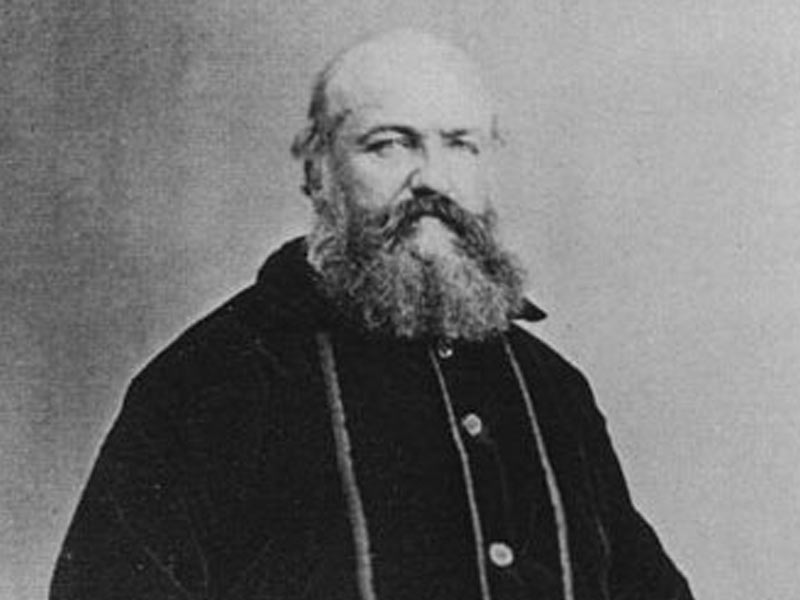
Levi was a member of numerous Masonic organisations, among which we can list “The Masonic Fraternity of the Grand Orient of France”, “The Brotherhood of Light” and the “Rosicrucian Society of Anglia”. Remarkably, the process that contributed to the abolition by the Church of Rome of the Bulls of Excommunication against Freemasonry, began after the studies that Pope John XXIII had asked Levi to make.
WHERE WE ARE NOW WITH CHURCH AND FREEMASONRY
The Italian journal Il Sole 24 Ore on 14 February 2016 published a letter by Cardinal Gianfranco Ravasi, President of the Pontifical Council for Culture. The letter began with these words: “Dear Brother Freemasons, over and above our different identities, there is no lack of common values: a sense of community, charitable works and the fight against materialism“. For those of you who want to read the full text, go to this link: https://rorate-caeli.blogspot.com/2016/02/dear-brother-masons-full-article-on.html.
The newspaper Il Giornale claimed the letter was a pretext by the Church to fire a message to Freemasonry on the lines of : enough with preconceptions, let us now dialogue and explore what is common and not what separates us.
The Grand Orient of Italy (G.O.I.) responded enthusiastically to the call and shortly afterwards it began holding teaching sessions in many dioceses of the Italian Peninsula.
Il Giornale went on the attack and issued a scathing condemnation of such initiative. The Catholic Church that until then had been warning its devotee not to join Freemasonry , was now installing a dialogue with the forces of evil ! As for Pope Francis, well he did not really care about doctrine and was more than ready to adapt it and even demolish it to fit needs and circumstances. Il Giornale ended by stating: “Today there seems to be a substantial stream of theologists and prelates in the Church whose heart craves for material possessions and Power and in order to obtain them , it is is prepared to renounce Christ’s teachings“.
So mote it be.
By Sirbelius
[1] Born in Senigallia, Italy 13.5.1792–Died 7 February 1878, Vatican – Pius IX was head of the Catholic Church from 1846 to 1878, the longest papal reign. After starting as a liberal, he reversed positions and strongly condemned liberalism.
[2] “The Phrophecies of Juan XXIII” by Pier Carpi is published in Spanish by Martinez Roca Editions.
[3] Martinism as practised today is based on the work of Louis Claude de Saint-Martin. The Society which enjoyed even the support of famous characters like the Count Cagliostro/Giuseppe Balsamo and the Count of Saint Germain.
[4] The British Martinist Order – https://www.bmosite.org/history
[5] Nunzio apostolico represents the Pope abroad ; he is a kind of diplomat.
[6] Saint Malachy was an Irish saint and Archbishop of Armagh, to whom were attributed several miracles and an alleged vision of 112 Popes
[7] Notably Pope Francis has been the first elected Pope ever to have come from the Jesuit Order
[8]Le Grimoire du Pape Honorius. The term Grimoire stands for book of magic spells and invocations.
SOURCES
Los Papas Masones (18.2.2008) – Respectable Logia Simbolica Centauro No.9-96, Mexico
Papa Francesco, le prove del legame tra la sua Chiesa e la massoneria: un attacco durissimo. By Davide Locano , 11 november 2018 – www.LiberoQuotidiano.it
Misteri – by Paolo Tescione – Aprile 25, 2016 – https://www.ioamogesu.com
Loggia Vaticana (La massoneria in Vaticano) – https://italiamistero.it
International traditional catholic web log Rorate-caeli.blogspot.com/2016/02
- His Majesty’s Servant , David Garrick Esq – Freemason ? - June 7, 2024
- Influencia de la Masonería en Chile - April 29, 2024
- Pomegranate in Freemasonry – its significance - March 11, 2024

